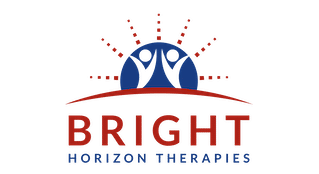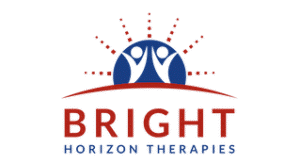Disclaimer: This article gives guidance on how to heal childhood abuse and discusses childhood abuse. Furthermore, it explores recovery. Healing is possible, but it is often a gradual journey that requires patience, support, and curiosity. If you feel activated while reading, please take care of your safety and well-being.
One hundred people – therapists, counsellors, social workers and clients – in a room. All is silent. What’s next? They are looking at her. She sits next to the therapist, her head down. What were the incidents in your relationship with your family? The therapist asks. Sexual abuse and violence. Her voice breaks. A shocked murmur spreads.
Are you an adult who wants to heal childhood abuse?
How many years didn’t I dare to look into other people’s eyes due to the sexual violence of my past? For how many years did I feel stigmatized due to the generic judgment of being a hopeless case? For how long had I allowed other people’s opinions to define my worthiness? My answer is, for too long.
How about you?
How does this murmur make her feel? I look at her. She shrinks in her seat. You can never overcome the effects of abuse. Poor thing, she’ll never recover. The voice of my colleague – a counsellor – cuts through my thoughts. I open my mouth, and I want to tell her, it is possible to heal childhood abuse. That is my experience. It is my truth.
How to find words to express what can’t be described but only experimented? My rational mind never fully understood the transformation I went through. The more I was able to own my pain, the more I was able to experience joy. How can I express this to her? I search for words. There is nothing. Silence. I shrink in my seat and feel small and powerless again. I lower my head and stay silent.
Do you have a secret story about childhood abuse?
We all carry experiences that shape us—some are spoken, some remain hidden. The one I told – I called it A Brave, True Story – is mine. I wrote it for the woman on the chair. It is my intimate message to tell her that she is not alone. And it’s also for you if you feel like her, even if you never speak your story aloud. Healing doesn’t always require telling the story; you can reclaim your life through holistic trauma focused therapies such as EMDR, parts work and somatic approaches.
Healing is beyond logical explanations.
Meaning what? Healing is an experience – it is about becoming whole again. It is about understanding what happened to you and how it relates to complex trauma. About reclaiming those parts of you that seemed lost in trauma and pain. A re-connection with your inner child to give them the love they have never received before. There will come a moment, when your inner child is fully awake, full of joy, curiosity, innocence, dignity and intuition. Do you know how innocence feels like?
What does healing childhood abuse look like?
As a trauma counsellor today, I see that healing is not about retelling your story—it’s about including what was excluded when the trauma happened. Healing is about facing the emotions that became stuck in the body in a safe and supported way. It can look like noticing a sense of calm where panic once lived, feeling your body’s safety in moments that previously triggered fear, or experiencing joy in places you never thought possible.
For me, living means feeling – a joyous dance to my favourite music, the warmth of sunlight on my face, the scent of fresh rain, or the laughter of loved ones. It is a deep gratitude for being alive, a sensation of bliss like exploding balloons filled with bright colours. These moments may seem small, but they signal that your nervous system can learn safety, that your body can release trauma, and that your mind can reclaim peace.
Healing is an experiential, embodied process: slowly reconnecting with parts of yourself that were shut down, gently witnessing and allowing the emotions stored in your body to move, and reclaiming a sense of wholeness that trauma once interrupted. You do not need to share your story with anyone to heal; what matters is your own safe engagement with your body, your feelings, and your inner life.
Recovery is about personal growth.
While trauma felt devastating, there is post-traumatic growth. Healing is about finding a safe space within yourself and taking responsibility for your needs and dreams. Reclaiming your well-being is about letting go of the invisible barriers you have built around your heart and learning to respect yourself. Respect is the foundation for healthy love. Wholeness is also about finding empowering ways to deal with stigma.
What is essential for healing childhood abuse?
Owning your story makes the difference between merely surviving or really living. I am not saying that it is an easy journey. It is a different journey. It is natural to feel scared to start this journey. Just imagine a small child that went through experiences that were overwhelming for them. However, you can be in control. You can learn new skills to face these emotions safely.
What can you do to heal childhood abuse?
No, I don’t want to force you to tell your story, but I invite you to take your time, continuously taking small steps toward healing.
Blame, criticism, and judgment – both internal and external – can be powerful forces that silence your voice forever. And, if you are like me, you’re probably the one who gives yourself the harshest criticism. You may try to adapt, fit in, be perfect, and fulfill excessive demands about who, how, and what you should be. If you allow this to happen, you pay a price: you can never experience deep connection and true belonging. If you try to fit in, you may earn some approval, but they do not see the real you. You can break free from this dynamic if you choose to.
If you’d like to explore the bigger picture of healing from childhood trauma as an adult, check out my article Adults with Childhood Trauma: How to Heal and Reclaim Your Life. It offers a deeper look at the recovery process and tools that support lasting change.
Sources
This article is informed by my professional training, lived experience in trauma recovery, ongoing study, professional practice, and the works of trusted authors and organizations in trauma recovery, mental health, and social justice. The references below include the books, trainings, and evidence-based resources that shaped the ideas discussed here:
Jovanic, N (2014). A brave, true story: A memoir about healing relationships and family ties. Self-published.
Amenós, J. (2013). Formación de cuentos, metáforas y guion de vida [Training in stories, metaphors, and life script] [Training course]. Institut Gestalt Barcelona
Bloom, L. (2012). ICF certified story coach program [Training program]. Story Coach Inc., Israel..
Franke, U. (2009). Wenn ich die Augen schließe, kann ich dich sehen: Familienstellen in der Einzeltherapie und -beratung – Ein Handbuch für die Praxis [When I close my eyes, I can see you: Family constellations in individual therapy and counselling – A handbook for practice]. Carl-Auer




